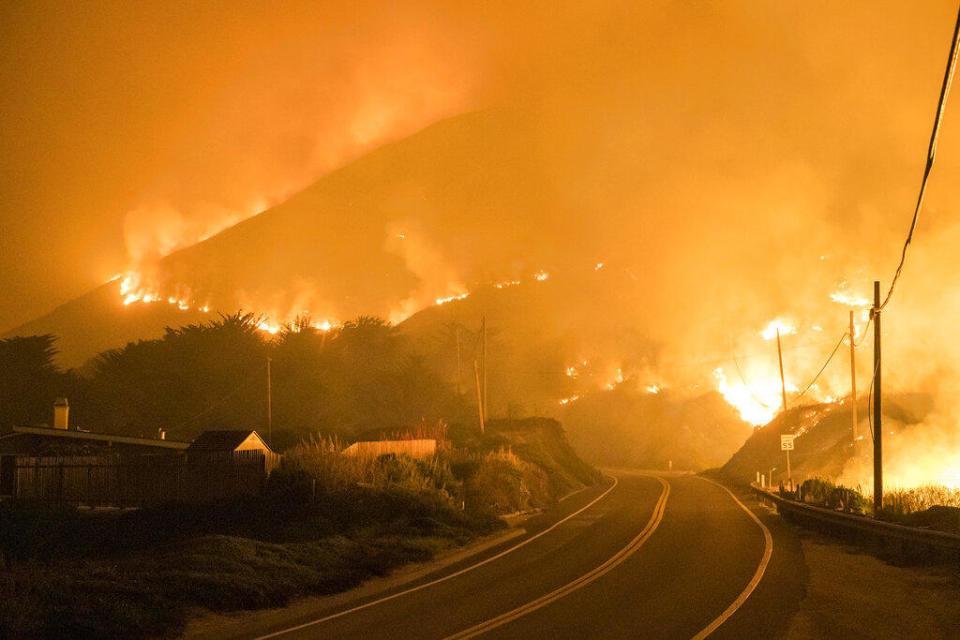Wildfire in Big Sur closes part of California's Highway 1, forces evacuations

A fire burning in California shut down part of Highway 1 and forced evacuations. As of Saturday night, it had grown to 1,050 acres, and was 20% contained, according to Cal Fire.
The blaze — called the Colorado Fire — began around 7:30 p.m. Friday near Palo Colorado Road in Big Sur, where it "remained stubbornly active overnight," according to the National Weather Service. The weather agency said the fire began when offshore winds were gusting and there was very low humidity. On Saturday morning, wind gusts in Northern California approached 100 miles per hour in certain areas, prompting the NWS to issue wind advisories.

The California Highway Patrol closed Highway 1 at Rio Road just outside of Carmel-by-the-Sea due to the fire and there is no estimated time for reopening, officials said Saturday morning. From south of the fire, Highway 1 was closed at Andrew Molera State Park, just north of Big Sur.
The American Red Cross opened a shelter late Friday evening for some residents who received mandatory evacuation orders due to the fire, CBS SF Bay Area reports. The emergency shelter for residents of the Palo Colorado area of Monterey County opened at 11:30 p.m. at Carmel Middle School.
Smoke from the fire is forecast to head towards the Monterey Peninsula and Salinas, according to the NWS. Residents and firefighters in the area are urged to monitor light southward winds that could change the track of the fire's spread.
So where will the smoke from the Colorado Fire most likely go today? Yesterday offshore winds pushed much of the smoke towards the ocean and south of Big Sur. A wind shift today will bring some of the smoke and haze towards the Monterey Peninsula and Salinas. #ColoradoFire pic.twitter.com/7VjWBKKUwb
— NWS Bay Area (@NWSBayArea) January 22, 2022
The weather agency points to California's drought conditions as a possible reason for the unusual January fire. According to the National Integrated Drought Information System, more than half of the state is experiencing severe drought, which makes for longer fire seasons with "high burn intensity, dry fuels and large fire spatial extent." In the area of the wildfire, rain is not forecast for the next seven days or so, according to the NWS.
"It seems as though the long term drought is acting like a chronic illness where even recent rains and cold winter wx isn't helping to keep fires from developing," the NWS said.
The Colorado Fire comes following promises from the Biden administration to address the country's wildfire crisis.
On Friday, Vice President Kamala Harris announced a $600 million federal investment towards helping California recover from last year's wildfires. And just last week, the Department of Agriculture and U.S. Forest Service announced a 10-year multi-billion dollar initiative to prevent wildfires.
As a daughter of California, I know the devastation that wildfires bring. Yesterday, in San Bernardino I joined @SecVilsack to survey San Bernardino National Forest. pic.twitter.com/DFPXsXfdnh
— Vice President Kamala Harris (@VP) January 22, 2022
M&M characters redesigned for a "more dynamic, progressive world," Mars announces.
Students cheer on classmate with Down syndrome
Army Corps of Engineers helps keep San Francisco Bay clean and safe

